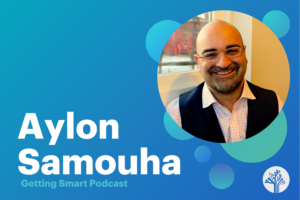Creatively Funding Your Blended Learning Program

“Creatively Funding Your Blended Learning Program” by Neil Campbell was first seen on the Education Elements blog.
 Last month the U.S. Department of Education announced the 16 Race to The Top District competition winners. The nearly $400 million awarded for the Race to the Top District competition (RTT-D) sounds like it is a lot of money. It is, in fact, a lot of money, and we are excited about the potential that this funding infusion will have on student achievement in those districts. That being said, we know that among 370+ applicants, there were more than just 16 great plans for building personalized learning environments.
Last month the U.S. Department of Education announced the 16 Race to The Top District competition winners. The nearly $400 million awarded for the Race to the Top District competition (RTT-D) sounds like it is a lot of money. It is, in fact, a lot of money, and we are excited about the potential that this funding infusion will have on student achievement in those districts. That being said, we know that among 370+ applicants, there were more than just 16 great plans for building personalized learning environments.
If your district was not among the winners, don’t discard your plans altogether. You can still implement your vision for personalized learning within your existing budget, even if on a smaller scale.
While it will be a challenge without RTT-D funding, implementing personalized learning may not be more costly than a traditional instructional model, over the long run. There are already some districts that have leveraged existing funding sources to implement blended learning and other personalized learning programs—for a good example, see this article about Mooresville Graded School District in North Carolina.
We have compiled a list of ideas below and with more details in a toolkit on our RTT-D Resources page about how you can leverage existing funds to proceed with some or all of your personalized learning plans. You can look into gaining efficiency from your technology spending as well as ways to re-invest existing state or federal funds.
- Examine software license fees and related usage
Many central offices sign district-wide licenses for software that is then not used consistently across all schools. Your district can review software usage and discontinue or reduce investments in products that all schools are not using and reallocate funds to support blended learning implementations.
- Consolidate idle computers to support personalized learning
Schools often spread computers across many classrooms and some computers simply sit idle for significant periods of the day. Your district can assess where computers are currently distributed and consolidate them into the schools or grades where personalized learning plans are most likely to take shape. Perhaps your district won’t even need to invest in new computers.
- Re-evaluate level of reliance on textbooks
Licenses for digital content can be difficult to afford in addition to traditional textbooks, even with long replacement cycles. While it may not yet be advisable in many districts, there are blended learning schools that have decided to completely forego textbooks and reinvested those funds in a combination of digital content and teacher-created resources aligned to their scope and sequence.
- Reallocate Title I, Part A funding
Title I funds can support a multitude of programs and activities that may or may not have a significant impact on student achievement. Title I funds can be used for computers, instructional software licenses, and professional development intended to improve a school’s instructional model. These funds can become even more flexible when districts implement school-wide programs in schools where at least 40% of students are low income.
- Reallocate Title I, Part A, Tutoring and Choice set-asides
NCLB required that schools in need of improvement for more than one year set aside funds for supplemental educational services (a.k.a. tutoring) and public school choice. If your district is in one of the 34 states (plus DC) whose request for ESEA Flexibility has been approved, you might be able to reallocate these funds to support blended learning implementations.
- Invest Title II, Part A funding for professional development
Many policy experts – and multiple ESEA reauthorization proposals – have proposed significant changes to improve the effectiveness of the Title II program. These funds, a significant portion of which are already used for professional development, could be invested to support professional development for teachers and principals implementing blended learning.
- Leverage School Improvement Grant funding
The SIG program provides significant funding to turn around the lowest performing schools in a state. If your district is among the few with new SIG funds, blended learning can be an effective strategy for your grant. It could also be a sustainable transition plan for schools completing their three-year grants.
We wish all the RTT-D winners good luck as they start working to make their vision for personalized learning environments a reality. For all the applicants, our updated RTT-D Resources page contains a new toolkit – Blended Learning on a Budget – as well as an Implementation Planning Toolkit, and slides from webinars on Selecting the Right Content and Creating Your Game Plan for Professional Development.







0 Comments
Leave a Comment
Your email address will not be published. All fields are required.